2021
Raadpleeg de voorbije verdedigingen
Biologically-Inspired Radar Sensing for Robotic Perception, Navigation and SLAM (03/12/2021)
Girmi Schouten
- Vrijdag 3 december 2021
- Promotor: prof. Jan Steckel
- Faculteit Toegepaste Ingenieurswetenschappen

Abstract
In zijn thesis stelt dr. Schouten een nieuw soort sensor voor, die betrouwbaar obstakels detecteert in landbouw of industriële omgevingen waar weersomstandigheden en deeltjes in de lucht het zicht belemmeren. Hij ontwikkelde die sensor zo dat die minimaal is in gewicht, energieverbruik en kosten.
Om aan alle vereisten te voldoen, bestudeerde dr. Schouten de manier waarop vleermuizen echolocatie gebruiken om hun omgeving waar te nemen. Die zenden een ultrasoon signaal uit en vangen reflecties op van objecten in de omgeving. Aan de hand van de informatie in de echo’s, kunnen ze de locatie, vorm en zelfs textuur van het object bepalen. Hiervoor gebruiken ze enkel hun mond of neus, oren en hersenen.
Het doel van dr. Schoutens thesis is om deze echolocatiefunctionaliteit na te bouwen in een elektronisch systeem. Hij gebruikte radiogolven in plaats van geluid, omdat deze meer bestand zijn tegen invloeden van de omgeving. Hiervoor is een uitgebreide studie uitgevoerd naar de achterliggende principes van echolocatie en is er onderzocht hoe deze naar radar vertaald kunnen worden. Het ontwerp van de sensor is geïnspireerd door de morfologie van de vleermuis, terwijl de signaalverwerking geïnspireerd is door de neurologie van vleermuizen en andere dieren.
Met deze thesis demonstreert dr. Schouten dat het mogelijk is om met de sensor locaties in een onbekende omgeving te herkennen. Het systeem kan zo een kaart van de omgeving op bouwen en zichzelf lokaliseren op die kaart. Deze kaart dan verder gebruikt worden om efficiënt routes tussen specifieke locaties in de omgeving uit te stippelen.
Verder kan een voertuig, gebruik makend van de sensor, succesvol autonoom navigeren in een onbekende omgeving. Voor de controle van het voertuig liet dr. Schouten zich inspireren door de intelligentie van insecten, waarbij verschillende elementaire besturingscomponenten samenwerken om complex gedrag te bekomen. Hierdoor kan het systeem navigeren in verschillende soorten omgevingen zonder te botsen, en kan het zich ook herstellen als het vast komt te zitten.
Met dit onderzoek zet dr. Schouten een eerste stap in de ontwikkeling van een biologisch-geïnspireerde radarsensor.
Safety Tracking with Range Camera Fusion (02/12/2021)
Izaak Van Crombrugge
- Donderdag 2 december 2021
- Promotoren: prof. Steve Vanlanduit & prof. Rudi Penne
- Faculteit Toegepaste Ingenieurswetenschappen
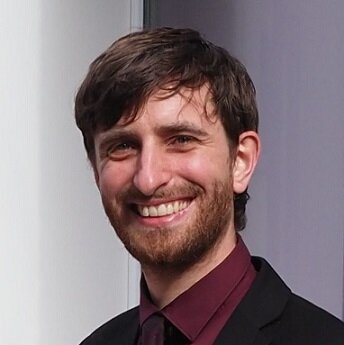
Abstract
In this doctoral research, dr. Izaak Van Crombrugge investigated how to improve worker safety using depth cameras. These are cameras that measure the depth for each image pixel. To avoid accidents at work, employers can track the position of all personnel in the room and adjust the behavior of the machines.For example, a crane dropping a heavy container on personnel standing underneath can be prevented. By using depth cameras, the tracking is very reliable. In addition the system is completely anonymous so the privacy of the workers is not being invaded.
In his research, dr. Van Crombrugge also takes into account the posture of the admitted workers. From the camera images, a simple 3D skeleton can be detected. The camera then automatically calculates the ergonomic score for this posture based on the angles of the joints. In this way ergonomic problems can be detected easily.
To correctly align the images of different cameras, extrinsic calibration is needed. In his doctoral research, dr. Van Crombrugge provided two convenient calibration methods to find the pose of a set of cameras. No overlap is needed between the different fields of view, allowing for efficient camera placement.
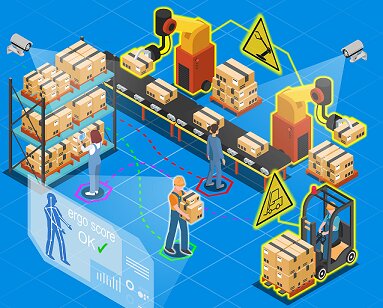
Dr. Van Crombrugge developed a robust method for people tracking using range cameras: Density Map Tracking with Blob Splitting (DMT-BS). Multiple cameras can easily be added to resolve occlusions and to enlarge the observed area. The method can be used to track any moving object in an otherwise static environment, as the detection does not rely on a specific human model.
Its strength lies in its simplicity, making the behavior predictable and opening possibilities to be implemented on low-cost hardware. From the point cloud delivered by the depth sensor, a 2D density map is formed in floor coordinates followed by basic 2D tracking. Robustness is enhanced using a simple but effective blob splitting technique. Tests show that the camera position, depth noise, and extrinsic calibration errors have little influence on the tracker’s performance. The proposed method was tested on three depth tracking datasets, reaching significantly better MOTA (Multiple Object Tracking Accuracy) scores when compared to two state-of-the-art depth-based trackers.
Towards a targeted optimization of electrocatalysts by combining electrosynthesis with in-situ electron paramagnetic resonance (30/09/2021)
Sander Neukermans
- Donderdag 30 september 2021
- Promotoren: prof. Tom Breugelmans & dr. Jonas Hereijgers
- Faculteit Toegepaste Ingenieurswetenschapen
Abstract
The capacity of renewable energy sources is steadily increasing. Together with the declining interest in fossil fuel, this generates opportunities for using electricity to power industrial processes. A chemical production process can be replaced by an electrochemical synthesis process with direct energy supply from a renewable source without inefficient energy conversions. The economic usefulness of such a process is then determined by the activation energy of the electrochemical reaction.
Electrocatalysts can be introduced to reduce this energy demand. However, predictions about the catalytic activity of a material are not straightforward and their development mostly goes through trial and error.
In his PhD thesis, dr. Neukermans focusses on the development and use of cells and electrodes to perform electrolysis experiments inside an EPR (Electron Paramagnetic Resonance) spectrometer. During electrolysis, electrons are exchanged between molecules in solution and electrodes. EPR exploits the presence of unpaired electrons to identify the species formed after the electron transfer by applying a magnetic field. The combination of these techniques can elucidate the reaction mechanism for the used electrocatalyst and their development can be improved and sped up. This method will lead to a more efficient use of renewable energy.
Complexiteit van bouwknooprenovaties en impact op thermisch comfort: een aanpak via typische Belgische bouwknopen (30/08/2021)
Stijn Van Craenendonck
- maandag 30 augustus 2021
- 14u
- promotoren: prof. Cedric Vuye & dr. Leen Lauriks
- De openbare verdediging gaat online door.
- Faculteit Toegepaste Ingenieurswetenschappen
Improving Scalability of Large Scale Agent-Based Simulations (05/07/2021)
Stig Bosmans
- maandag 5 juli 2021
- promotoren: professor Peter Hellinckx en professor Joachim Denil
- Faculteit Toegepaste Ingenieurswetenschappen - opleiding elektronica-ICT
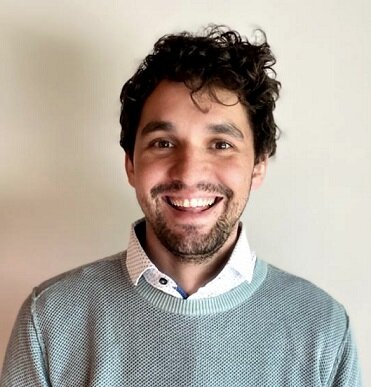
In zijn thesis behandelt doctor Stig Bosmans de verschillende technieken om de efficiëntie van grootschalige simulaties te verbeteren. Grootschalige simulaties zijn noodzakelijk om het gedrag van complexe systemen te kunnen analyseren en mogelijk zelfs te optimaliseren.
Als hij bijvoorbeeld het gedrag van verkeer in een stad efficiënt kan simuleren, wordt het makkelijker om dat verkeersgedrag ook te optimaliseren door bv. de verkeerslichten aan te sturen. Zo'n optimalisatie stelt ons vervolgens in staat om de verkeersdoorstroming en de luchtkwaliteit in de stad te verbeteren.
Dr. Stig Bosmans gaat in zijn thesis dieper in op twee technieken om de efficiëntie van dergelijke simulaties te verbeteren. In de eerste, verbetert hij de efficiëntie van gedistribueerde simulatie door de computationele lasten dynamisch te verdelen tussen de verschillende servers die samen de simulatie uitvoeren.
Bij de tweede techniek onderzoekt hij manieren om dynamisch het abstractieniveau van de simulatiemodellen aan te passen. Dat laat ons toe om beter te balanceren tussen computationele complexiteit en accuraatheid.
Angle of Arrival Estimation for Low Power and Long Range Communication Networks (11/05/2021)
Noori Bni Lam
- dinsdag 11 mei 2021
- promotoren: professor Maarten Weyn en professor Jan Steckel
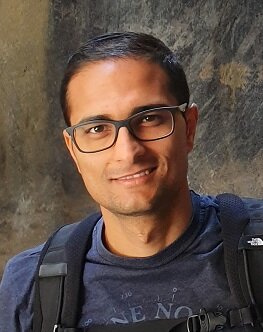
Abstract
The Internet of Things (IoT) is a concept that has been evolving in the last decade to provide an internet connectivity to objects of everyday life. The versatility of these objects knows no limits. Whether they’re traditional devices such as bicycles, motors, home appliances, tools of any kind, or modern devices such as sensors (e.g. temperature, humidity, air quality, motions, health monitoring, etc), IoT devices are expected to be deployed massively in the near future. Besides this large amount of IoT devices, most of these devices are also mobile and thus require a means of tracking their location.
Navigation solutions such as GPS can be used for the localization purposes. However, GPS modules are considered power-hungry receivers, which makes them inappropriate for low power operations. Furthermore, the GPS system is designed to be used in open sky conditions, and so it is severely limited in strong attenuation environments, with little or no service in dense urban canyons or indoor environments.
Consequently, the localization aspect of the IoT devices is still under enormous developments. These developments vary in terms of complexity, accuracy, and cost effectiveness. In this thesis, Dr. Noori Bni Lam proposes low cost and low power localization systems for IoT devices while maintaining a high accuracy.
Hybrid Timing Analysis Based on a Block-Isolation Technique (22/04/2021)
Haoxuan Li
- donderdag 22 april 2021
- Promotoren: professor Paul De Meulenaere & professor Peter Hellinckx
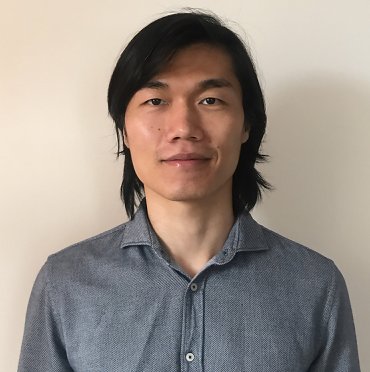
Abstract
Real-time embedded systems can be found easily in our daily lives. They are made to complete a simple function within a given time frame. For example: in automotive engineering the duty of one real-time embedded system is to control the brakes. Once the brake function starts, the car must be stopped within a certain amount of time. Otherwise, an accident might happen.
Understanding whether a system can meet the timing requirements at the early design stage can help avoid design iteration and reduce the design cost. Timing analysis techniques are developed to obtain the timing behaviour of a system.
During the design phase of a real-time embedded system, it is critical to know whether the timing behaviour of the system can meet the timing requirement. The process of deriving the timing behaviour of such systems is known as timing analysis.
One type of the current timing analysis techniques requires much engineering cost to derive reliable timing analysis results. Another type of techniques require less engineering cost, but the results are not very reliable.
In this thesis, Dr. Haoxuan Li proposes a timing analysis technique that combines both types of techniques. The proposed timing analysis techniques can be used by engineers to derive reliable timing analysis results at an affordable cost.

A Multiscale Approach to Model Thermo-Hydro-Mechanical Behaviour of non-reinforced Concrete (29/03/2021)
Saeid Babaei
- maandag 29 maart 2021
- Promotoren: Prof. Dr. Bart Craeye & Prof. Dr. Gunther Steenackers
Abstract
The main driver for this study was to investigate the thermo-hydro-mechanical (THM) behaviour of cementitious engineered barriers, in particular, the barrier for high level nuclear waste containers considered in the Belgian deep geological disposal program.
This thesis proposes a stepwise, multi-component and multiscale framework to model thermo-hydro-mechanical (THM) behavior of cementitious materials starting from microstructural modelling by representing microstructure of the material based on its chemical composition and reaction condition (curing, age, temperature, etc.).
This modelling tool is then coupled with an algorithmic scheme adapted to convert such microstructure to a representative pore network and simulate transport properties. Regarding the mechanical and thermal properties, including elastic modulus, coefficient of thermal expansion and heat conduction coefficient a micromechanical scheme has been implemented by means of numerical homogenization.
Finally, a multiscale and microstructure-informed THM simulationof an engineered barrier for high level nuclear waste container is carried out, where the material parameters are derived using the hydro-mechanical framework. The main objective of this application is to identify spatial regions of the engineered barrier that are prone to crack formation and propagation due to evolving thermal load and its consequences to hydro-mechanical behaviour of the barrier.
Design Optimization of Air Distribution Systems in Non-residential Buildings (25/02/2021)
Sandy Jorens
- donderdag 25 februari 2021
- Promotoren: Prof. Ivan Verhaert & Prof. Kenneth Sörensen
Abstract
Verwarmings-, ventilatie-, en luchtbehandelingssystemen (HVAC) moeten de laatste jaren steeds aan strengere eisen voldoen. Ontwerpingenieurs worden uitgedaagd om kwalitatieve systemen te ontwerpen die optimaal presteren, een hoog comfort bieden en energie-efficiënt zijn. Dit alles dient te gebeuren binnen een beperkte tijd en budget.
Meer dan ooit is er nood aan een gebruiksvriendelijke ontwerpmethode die de ontwerper ondersteunt in het bereiken van de genoemde doelstellingen. Zeker als we kijken naar het ontwerp van luchtdistributiesystemen. Momenteel wordt er nog te veel gesteund op vuistregels en de ervaringen van de ontwerpingenieur.
Doel van de thesis
Doctor Sandy Jorens gaat in haar thesis dieper in op deze noden door de basis te leggen voor een holistische ontwerpmethode voor centrale luchtdistributiesystemen in niet-residentiële gebouwen.
Centrale luchtdistributiesystemen in niet-residentiële gebouwen worden gekenmerkt door een uitgebreid netwerk aan luchtkanalen. Zowel de lay-out van de kanalen, als het aantal ventilatoren en hun locatie in het gebouw, hebben een aanzienlijke impact op de totale kostprijs en de prestatie van de installatie. Bestaande ontwerpmethoden houden echter geen rekening met lay-out voor optimalisatie of evaluatie.
Oplossing van de tekortkomingen
In dit onderzoek pakte Sandy deze tekortkoming aan door eerst een nieuw optimalisatieprobleem te introduceren. In dit optimalisatieprobleem worden zowel de lay-out van de kanalen als de afmetingen van de kanalen en ventilator(en) berekend, waarbij de totale kost van de installatie geminimaliseerd wordt.
Sandy ontwikkelde voor dit onderzoek een heuristisch algoritme dat dit nieuwe optimalisatieprobleem efficiënt tracht op te lossen, opgebouwd uit een constructive en local search fase. Ze berekende ook verschillende lay-outs waarbij de kanalen en ventilatoren een eerste keer gedimensioneerd worden.
Het resultaat
Dankzij Sandy’s onderzoek kunnen er configuraties gegenereerd worden met een of meerdere ventilatoren, waarbij het kanalennetwerk is opgebouwd uit zowel ronde als rechthoekige kanalen. Een toepassing van het algoritme op een praktische test case bewijst de toegevoegde waarde van de methode voor de praktijk. In vergelijking met traditionele oplossingen, kunnen er aanzienlijke kostenbesparingen (tot 51.5%) bekomen worden.
Biorefinery concept in paper recycling: modelling, verification and prediction of bleaching process (13/01/2021)
Giorgio Tofani
- woensdag 13 januari 2021
- Promotoren: Prof. Serge Tavernier & Prof. Iris Cornet
Abstract
- Understand the differences between the fibre types to the bleaching process and develop a mathematical equation to estimate the brightness of a recycled paper when its amount and types of fibres are known. In this way, it would be possible to predict the bleachability of a sample of recovered paper.
- Recover chemicals and materials from two waste streams generated respectively during paper recycling and cardboard recycling.
Conclusions
The different fibre types have diverse reactivity to the bleaching process, and they mutually influence each other during this treatment. A mathematical equation, called multiple linear regression, was developed and permitted to estimate the brightness knowing the fibre composition of recovered paper. More research can be considered to improve the mathematical equation.
Recycled filler, a mixture of salts and clays, was recovered from the waste generated during paper recycling. This material can be recycled and used in papermaking. Moreover, two chemical compounds (lignin and hydrocarbon derivatives) were retrieved from the waste generated during the recycling process of cardboard. These chemicals have a wide range of applications. For example, lignin can be used in the asphalt industry.